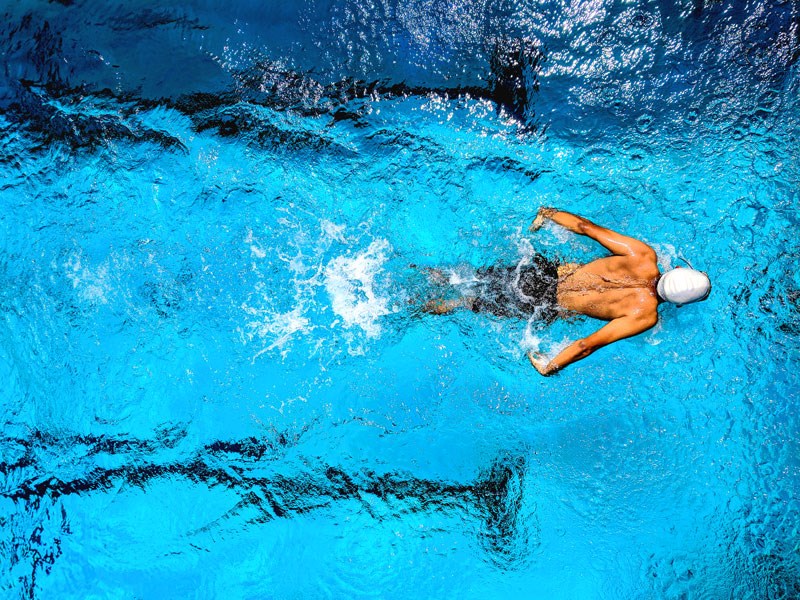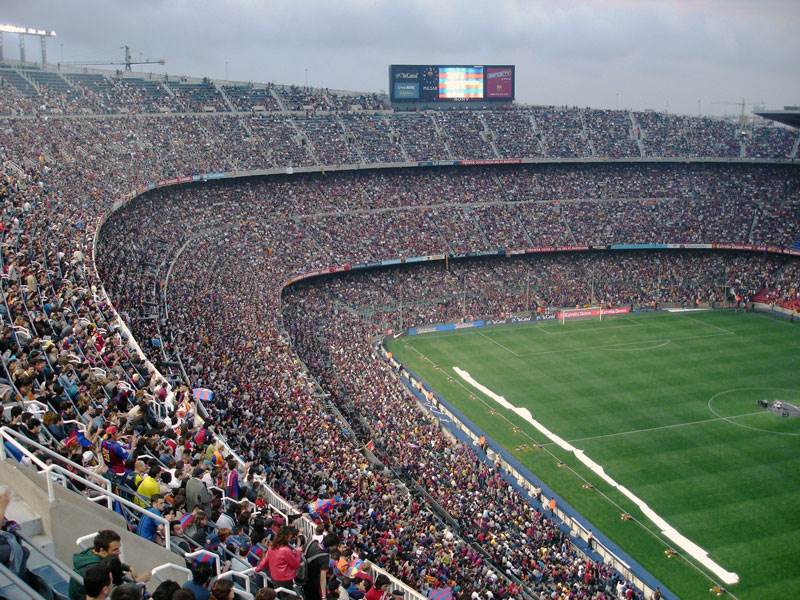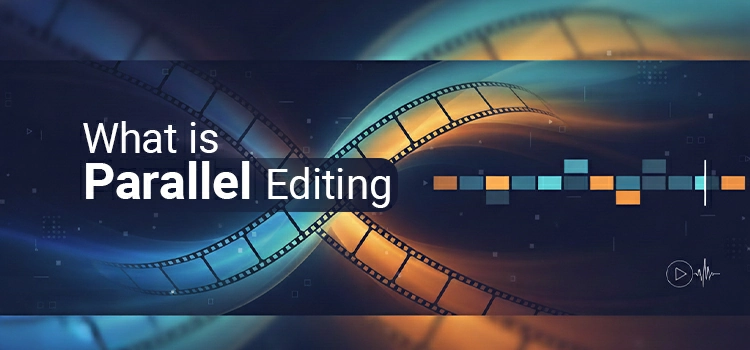Sports Photography and Videography: A Complete Guide

When it comes to any international sport, photography, and videography are closely related to it. Due to the blessings of sports photography and videography, we get updates and news of various sports such as football, cricket, tennis, rugby, etc. online together with visuals in this modern era.
On top of that, the variety of news in the text form also gets bolstered by the visuals. We will touch on sports photography first and then dilate upon sports videography.
How to Improve Sports Photography?
Sports photography is an uphill task as it requires a substantial amount of time to capture a game whether it’s soccer, cricket, or any other sport. But when we view different shots of these games, they reflect an immaculate and smashing look in the newspaper, don’t they? Well, let’s walk you through some fruitful sports photography tips.
Enrich your knowledge of the Particular Sport:
Before you even decide to carry out sports photography, you have to ramp up your knowledge of the particular sport. You have to know how a specific sport operates; whom to follow and what the rules and regulations of the sport and so on. This will let you take professional and majestic photos. If you possess detailed knowledge of football, go for football photography.
It is very key that you know each and every action of the players; how they will approach afterward, you have to know that beforehand. If you wish to shoot cricket and you don’t know comprehensively about it, you have to take your time and learn about it whether by watching cricket on television or from online resources.
Comprehend Autofocus and Subject Tracking:
For a sports photographer, knowledge of both autofocus and subject tracking is inevitable. Depending on different types of photography, these two features of the camera are very conducive tools. Autofocus allows you to focus subject crisply while subject tracking enables you to focus on the right subject. Setting Autofocus in advance is recommended to make sure the subject is constantly in focus.
The latest cameras have subject-tracking options that include 3D tracking and face detection. If you intend to snap fast-moving subjects like racing cars, gymnasts, race cars, etc. 3D tracking is beneficial. On top of that, face detection is useful for fighting sports such as boxing, wrestling, etc.
![]()
Make use of Telephoto Lens:
The best lens for sports photography is the telephoto lens. This lens will allow you to focus on your subject closely. The focal length basically depends on the action you intend to shoot and the camera you use. Your beginning point can be like a 70-200m f/2.8 lens that will allow you a fast maximum aperture, thereby focusing on the desired subject.
If you wish for a more magnified subject, you can choose a super-telephoto lens (a focal range of 150-600mm). Even though the maximum aperture will be a little slow for this lens, at f/5.6-6.3.
You may also read– Best Canon M50 lenses for Sports and Everyday Photoshoots.
Go for Faster Shutter Speed and ISO:
Sport is all about athleticism where players keep moving from one position to another. To freeze a particular action, you should use a fast shutter speed, something between 1/500s to 1/2000s. The faster your subject moves, the higher the shutter speed should be. The likely drawback of a faster shutter speed is that it doesn’t allow adequate light exposure to the image sensor.
Hence, capturing sports actions at night gets tricky due to the deficit of light. To offset this issue, you should also use high ISO. You can try auto ISO or different ISO values in manual mode to figure out the matching shutter speed/ISO values. Use ISO values between 1400 and 1800 for manual mode.

Be Circumspect about Using Camera Flash:
You have to be very meticulous about using flash whether built-in flash or flashgun as there are many professional sports that restrict the use of camera flash. This is because flash is distracting and can blind the sportsmen and athletes interrupting the game’s flow.
Therefore, the wise approach is to consult with the coaches and the sports directors prior to shooting any event to know about the rules and regulations of the particular sport. Having said that, it is safe not to use the camera flash as it is unlikely for the flash to have any impact on the remote subject. Rather, it will focus on something nearby hindering your photoshoot.

Avoid Chimping:
Chimping in photography refers to looking at every single shot after capturing them. This is not advisable in sports photography as actions in sports are a continuous process. Every moment in a particular game delivers excitement that deserves to be captured. As a sports photographer, you are supposed to be obsessed with taking shots. Your maximum attention should be on the viewfinder.
When you are chimping, you are going out of the action and missing the flow of action. Secondly, chimping is also perilous for your own safety as during every game, the audience remains electrified; they keep moving up and down out of jubilation. If you are chimping while taking shots from the gallery or from other places nearby spectators, you can be wounded. So, refrain from chimping.
Shoot as much as you can:
For a sports photographer, it is very crucial to click a maximum number of shots of a single event. Whether it is soccer, cricket, or any other sports, umpteen action-packed moments take place. For example, in football, after scoring a goal, players celebrate it in a funny and uncanny fashion either by jumping on one another or going bare-chested. These moments are indispensable to snap.
Likewise, many a time in cricket, due to the wrong decision of the umpire, weird moments appear engaging the players. Capture each and every moment and strengthen your portfolio. Keep “Burst Mode” on the camera active to click as many photos as you can per second in necessity. On top of that, focus on the ambient happenings such as audience, coaches, support staff, and other animated members.

How to Carry out Sports Photo Editing?
The charming sports photography that we view on screen and online portals, is it only due to cracking sports photography? Absolutely, not! Then, what else spices up this type of photography? Well, the secret lies in sports photo editing. With the application of various photo editing techniques, they are upgraded to enchant the viewers.
Among various image editing software, Adobe Photoshop is the best and most reliable for most photo editors. With proper knack and craft, you can retouch sports photographs professionally with the help of Photoshop. The latest version of Adobe Photoshop
has all the required tools and features you can avail to optimize all sorts of detailed and complex sports photos.
Crop your Image to Eliminate Distractions:
The first and foremost stage in photo editing is cropping and straightening your image. This enables you to regulate the composition of your image easily. To do so, select the Crop tool from the toolbar. Make sure “Delete Cropped Pixels” is not checked in the options bar which will allow you to crop the image immaculately. Drag the handles at the top, bottom, corners, and sides of the image inwards until you make the adjustment you are looking for.
Alternatively, if you want to crop to a specific size or ratio, enter this in the Options bar. Press Enter to confirm. To adjust the crop later, press C, hit inside the image, and re-crop. Click the Straighten button to straighten the image. Finally, draw a horizontal line along the horizon. Once you release the mouse button, the image will rotate, and the corners will be cropped. Press Enter to confirm.
Add a New Adjustment Layer:
Once you import a specific sports photo, the first and foremost thing you should execute is to add a new adjustment layer. Right after that, select “Exposure” and set the value for it. Then, add another adjustment layer in the same process and select “Levels”. Once the layer panel is open, click the black slider and tweak it to a little darker. Follow the same process for the white slider in the case of light objects in the photo.
Take Advantage of Pen Tool:
Mastering the pen tool is very conducive to image editing and it’s worth the effort. In sports photography, a photographer takes shots randomly and has very little chance of snapping as he wills. This is because the game is in progress and the players are in different postures.
Hence, the photo output is likely to have scads of flaws in the background and other parts. This is where the pen tool comes into play as it allows the user to maintain perfection while clipping unwanted portions of the photo whether it is the background or any other unwanted objects.
Focus on Lighting and Exposure:
Not only in sports photography but also in other types of photography, ambient lighting impacts massively. Different types of sports are played in different lighting conditions. In the daytime, sports take place under natural light while during the night, they take place amid floodlights, LED lights, and other types of artificial lights.
At the time taking shots in a stadium, lights are not under the control of a photographer and so the shots can be overexposed or underexposed. Hence, the photographer has to upgrade the photos with the help of image editing software especially Adobe Photoshop.
Make your Sports Images Crisp and Smooth:
Now, it’s time to sharpen the images. To execute it, most people opt for two sharpening tools, Unsharp Mask or Smart Sharpen. But the best filter to sharpen images is a high pass filter. Image sharpening is predominantly an illusion and a high pass filter is the second to none to create this illusion.
Image sharpening works by enhancing the contrast along the edges of the images. Scaling up contrast along the edges makes the light side lighter and the dark side darker. In our vision, we interpret this contrast enhancement as sharper.
Apply High Pass Filter:
High pass filter is an edge-detection filter and so it can easily detect the edges of an image. With the application of a high pass filter, the edges of the image are highlighted and then we can integrate the high pass results with one of the contrast-enhancing blend modes of Photoshop to boost the contrast of the edges.
To apply a high pass filter as a non-destructive smart filter, you must convert the image layer into a smart object. The Layers Panel will show the newly opened image in the Background Layer.
Convert it into a Smart Object:
To convert the background layer into a smart object, click the menu icon at the right top corner of the Layers panel. Select Convert to Smart Object from the menu. A smart object icon will appear at the lower right of the preview thumbnail indicating the image is inside a smart object. Whatever tweaks we make to sharpen the image will be applied to the image without harming the original image.
Thus, you will get a sharp, noise-free, and upgraded sports image. Finally, you can make other minute tweaks to get an optimized and professional sports photo. The exact process you have for your other sports photos.
How to Accomplish Stellar Sports Videography?
When it comes to sports videography, it’s completely dissimilar to other sorts of filming. For most of the video shooting, scripts are premade. Based on the scripts, video shooting is carried out. But in sports, players and athletes execute their actions as per the demand of the game. Instead of following a script, a particular sport dictates its course of events.
As a sports videographer, you have to be well-equipped to capture all the actions, right from start to end. As a newbie sports videographer, you may not be as captivating as professional sports videographers. But following some handy tricks will certainly help you to produce blazing sports filming.
Know the Particular Sport Exhaustively:
Having comprehensive knowledge about a particular sport prior to shooting is incumbent. If you are familiar with the sport, it is the best and you will be more comfortable filming that sport. But if your knowledge about the sport you plan to shoot is limited, you have to garner profuse knowledge about it.
Apart from watching the sport on television, you can also make use of online resources pertaining to the sport to enrich your knowledge. Jot down the ideas and techniques you get from the internet for your shooting. It may not be a complete storyboard but it will help you out.
Make Use of Action Cameras instead of DSLRs:
In DSLRs, there are limitations in the film as it will not allow you to film continuously for a longer period. In contrast, as a sports videographer, you will often need to film for a longer period. Most DSLRs are capable of filming for 12-30 minutes continuously. This will not only trigger an interruption but also you are likely to miss key moments of the game.
video source: Pexels.
You can start and stop shooting between the play, but it’s a tedious job. On the contrary, action cameras are popular and conducive for sports videography as they can bring extraordinary angles and give a new perspective to the shots. Adding point-of-view shots in your video with an action camera is also a great idea. Along with that, you can also create special angles for your video with various camera mounts.
Keep your Shots Steady yet Dynamic:
To take steady shots, the best tool is a tripod. Steady shots can function magnificently for action sports if well-composed. For example, you can capture a landscape while shooting a bicycle stunt in your static shot. Gimbals are stunning gadgets to use for taking dynamic shots and maintaining steadiness.
video source: Pexels.
Gimbals are even available for action cameras with the utilization of gimbals, you can create a splendid watching experience for the audience. On top of that, you can also create steady hand-held moving shots with stabilized lens and body stabilization or with the amalgamation of both. You can go for a wide-angle lens for steady videography as well.
Shoot at a High Frame Rate and Shutter Speed:
Filming sports where all the actions are fast-paced, high frame rate and shutter speed are vital. Generally, most videographers use 24 fps at 1/48th shutter and consider this speed as the ideal speed for their professional works. This frame rate is acceptable for TV commercials, wedding videos, feature films, and television shows. As far as sports videography is concerned, this frame speed is not up to the mark and a high frame rate is necessary.
Similarly, shutter speed also matters in the case of sports videography. A slow shutter speed will create motion blur as sports actions happen to be very speedy. When the action on the frame moves faster than the shutter, the motion smears across the screen. 60 fps and 1/120th shutter are likely to smoothen the motion and freeze the action effectively.
You may also read– Framing in Photography.
Go for Wider Shots rather than Close-ups:
Close-up shots are well-suited for normal videography but for sports videography, it will be considered a fumble by the audience. When you are shooting a single person, you take close-up shots the individual is the center of attraction. But when it comes to sports videography, a single individual is not the focal point. Rather, the entire game including all the players taking part in the game is supposed to be in the frame.
video source: Pexels.
When you are filming a sports game, it is for the audience and the audience wants to view the game’s entire actions; the players’ position with respect to other team members and opposition. Furthermore, if you take excessively zoomed-in shots, you can also miss key actions of the game. By going for wider shots, you can keep all the crucial actions in the frame.
Tips to Execute Sports Video Editing:
Shooting sports videos is full of fun as you get the opportunity to rejoice in live-action videos right in front of you. Amid electrifying buzz and an animated atmosphere from the crowd, the video shooting won’t be as smooth as you wish; there will be unwanted sounds, objects as well as interruptions. Video editing is the phase that provides you the scope to eliminate these defects and optimize your video. It requires a great deal of time and effort to edit sports videos professionally.
But are you afraid of getting started with video editing just because you don’t have expertise? No worries, there’s a massive video editing resource available online. And those can assist you to get your first video edited quite impressively. Aside from paid or random resources, have a look at some of the pivotal hacks to beef up the efficiency of your video editing work.
Keep your Video Concise:
These days the internet is littered with videos. On a single topic, multiple videos are uploaded for marketing and educational purposes. Viewers always look for videos that are short but informative. They don’t have ample time to spend watching videos on a particular topic for a longer period.
So, shoot videos as much as you can lest you might miss any worthwhile shooting moments. But keep them concise to attract viewers’ attention and try to add value to each second of your video. There is nothing wrong to leave breathing space in between shooting multiple videos.
Take Advantage of Intro and Outro:
For any professional video, an intro, and outro are crucial. Sports videography being an intriguing one, incorporation of intro and outro are a must. A video commencing out of a blue without creating any curiosity about the content of the video is likely to fluff in its purpose. Likewise, a video ending without any sign-off, entertaining essence, or credits will not intrigue the audience as it will appear to them lacking professionalism.
Hence, don’t forget to supplement the intro and outro to give your audience knowledge about the subject matter. For example, if you shoot a video of a cricket match, you can add a glimpse of cricketers as an intro and outro to arouse interest among your viewers.
Remove the dialogues:
While watching sports video footage, viewers don’t want to watch interviews, dialogues, and other irrelevant activities rather they want to directly watch the action. Whether it’s football, cricket, tennis, racing, or any other sport, they want to see how players are performing in their respective games.
They are reluctant to see unnecessary gossip by players as well as other supporting staff and the difficulties the players faced while gearing up for the game. So, while upgrading videos, it is key to clean up the pointless portions of the footage whether it is dialogues, communication errors, unpleasant incidents, etc.
You can have ideas on different types of film cuts to deal with this portion of removing unnecessary segments in your video.
Add Sound Effects:
To make your sports videography thrilling and eye-catching, adding cool and smooth sound effects is ineluctable. Sound adds an emotional effect in sports video footage and it can be added in the musical form whether as a classical song, rock song, or simple sound effects. It encapsulates the tone of the video content if added properly.
When the sound effects align with the contents of the video footage, they not only trigger an adrenaline rush but also interest the viewers to glue to the video. For example, if a batsman spanks a six in a cricket match, a “whack” sound can be added syncing with the scene. Similarly, if a football player falls on his bottom, a “Ding” sound effect can be supplemented by concurring with the scene.
Urge on Lighting and Angles:
Both these elements play a key role in upgrading sports videography. Lighting is so important that viewers’ duration of watching a video banks on it abundantly. The proper representation of sports scenes is well-reflected through correct lighting in the video. With a balance of color and contrast, sharp visuals can be portrayed in the video, thereby gluing the viewers even after the event has concluded.
Failure to use appropriate lighting will result in a dark and washed-out video. In the case of angle, it is prefixed during shooting. Angles scale up viewers’ perspectives and make them part of the event.
Spend time on Sequencing and transitioning:
Sequencing can make or break sports videography. Placing clips one after another in a rational manner to create a story is indispensable to intrigue people. The segment of the video should be concise and easy to handle.
For example, after a team wins in a cricket match, the players belonging to the winning side celebrate their victory and then a few of the team members have an interview with presenters and reporters. Now, if the interview comes ahead of the celebration, it is totally a mismatch and flaw in sequencing.
Watching such a video will flummox the viewers and ultimately the video will not serve the real purpose. Likewise, the transition is also a very important step to reflect the connection between players and spectators with segment splicing. Due to the transition, spectators feel they are also part of the game.
To Wrap Up
Photography and videography are 2 mediums that have revolutionized the entire sports industry. All the international sports right from football, cricket, baseball, tennis, swimming, etc. are at our fingertips due to photography and videography. Every day we view innumerable sports photos and videos on various sports websites, social media, newspapers, and other platforms. But what’s important for both these arts is top-grade quality.







